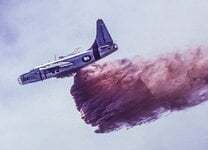Admiral Beez
Major
Given the wildfires across Canada and the US, does North America need an amphibious water bomber larger than the twin-engine Canadair CL-215/415?
The Russians, for example have the much larger Beriev Be-200 and the Chinese the AVIC AG600M, while Japan is proposing a water bomber variant of their ShinMaywa US-2. The later two of these larger water bombers are four engined.

 www.flightglobal.com
www.flightglobal.com
The Russians, for example have the much larger Beriev Be-200 and the Chinese the AVIC AG600M, while Japan is proposing a water bomber variant of their ShinMaywa US-2. The later two of these larger water bombers are four engined.

Japan's ShinMaywa floats fire-fighting US-2 amphibian
Japan's ShinMaywa Industries has unveiled specifications for a fire-fighting variant...
Last edited:






